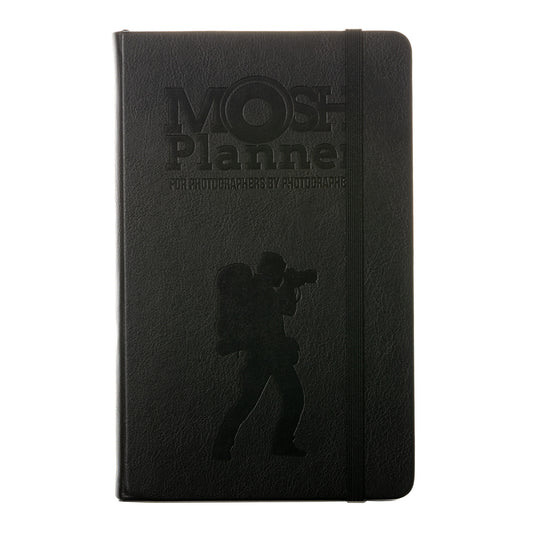Perched in my city residence amidst Vienna's majestic skyline, memories of a 35-year photographic journey course through my veins. Vienna, with its seamless blend of historical grandeur and contemporary allure, mirrors my experience in the world of photography – a dance between the tactile, intimate touch of analog and the breathtaking strides of digital.
My trusted Canon EOS R6, a marvel of today's digital age, captures the world with a clarity and ease that was once the stuff of dreams. But as I caress its sleek frame, I'm transported back to a time when every photograph was a labor of love, painstakingly developed in dimly lit rooms, infused with chemicals and patience. This introduction is not just an ode to times gone by but a tribute to the ever-evolving world of photography, which, while racing towards the future, should never forget the charm of its past.
The Charm of the Analog World

When I began my photographic journey, the camera was not just an instrument; it was a companion. Every roll of film was precious, and every shot was a calculated risk, an embrace of the moment, knowing that it couldn't be replicated with a mere click. The darkroom was a sacred space, where images would slowly emerge, like phantoms, on photo paper, revealing their stories.
In those analog days, photography was as much about the process as the result. The weight of the camera, the texture of the film, and the anticipation of the final image – these were integral facets of the experience. Each photograph was not just an image; it was a culmination of a process, a journey. There was a tangible connection, a tactile memory that lingered long after the photograph was taken.
I fondly recall evenings spent with fellow enthusiasts in Vienna's high-culture circles, exchanging stories over wine about our adventures with film. And as I'd attend operas, the rich tapestries of stories sung on stage would remind me of the narratives each of my photographs held. In today's digital rush, it's essential to remember and cherish this charm, to not let the ease of technology make us forget the soulful depth of analog.

Digital Revolution
The dawn of the digital era in photography was akin to a revolution. Gone were the days of waiting and the limitations of film. With digital cameras, the world became a playground with endless possibilities. Images could be viewed instantly, edited on the go, and shared with the world in seconds. My transition to the Canon EOS R6 epitomized this shift, and the results were nothing short of breathtaking.
But as the world rapidly moved towards pixels and memory cards, a part of me yearned for the simplicity and authenticity of film. While digital offered precision, analog offered soul. It became imperative to strike a balance, to leverage the power of digital without losing the essence of analog.
My Facebook page became a testament to this dance between the two worlds. Pictures of Vienna, in all its modernity, would sit side by side with nostalgic portraits reminiscent of a bygone era. The response from my community, including the Portrait Society of America, reaffirmed the need for this harmony. While digital photography opened up unprecedented avenues and made capturing moments easier, it was crucial to ensure that the heart and narrative of each photograph remained undiluted.
The Resurgence of Paper and Analog Tools
In a world dominated by screens, the tangible allure of paper has experienced a compelling resurgence. And it's not merely nostalgia that fuels this revival but an intrinsic need to connect with material that has substance, memory, and depth.
This revival resonates deeply with my experiences. When I go antiquing on Vienna's quaint streets, I often stumble upon vintage diaries, planners, and notebooks that whisper tales from the past. There's an undeniable magic in the feel of paper, the rustle of pages turning, and the indelible ink marks that chronicle moments, thoughts, and dreams.
For photographers, especially, this return to paper offers a deeper, more thoughtful way to plan, document, and reflect on our journeys. Take, for instance, the Mosh Planner Pro. With sections for Photo Ideas, Boring Important Details, and even Adventures Overview, this planner marries the old-world charm of paper with the demands of contemporary photography. It’s not merely about jotting down details but about weaving stories, revisiting concepts, and ensuring that nothing significant slips through the digital net.
Using it, I've penned down locations that I yearn to capture, noted gear details, and even scribbled stories behind every shot, making my photos more than just pixels on a screen. The planner rekindles the essence of the analog days – of patience, preparation, and profound connection with one's craft.
The Power of Documentation and Reflection
Documentation has always been crucial in the world of photography. Every professional knows the importance of meticulous records, not just for the logistics but for the narrative they weave around each shot.
Mosh Planner Pro champions this by ensuring photographers can document not just the technical aspects but also the soulful journey accompanying each click. The Photo Story section, for instance, provides space to capture the ambiance, the emotions, the very aura of the moment before the shutter clicks.
It's one thing to capture a picture-perfect sunset over the Danube; it’s quite another to describe the mellow tones of the opera playing in the background, the hint of autumn in the air, and the heart's subtle flutter at witnessing such raw beauty.
For me, documentation extends beyond the immediate. After a photography session, when I sit with Mozart, my Dachshund, in my cozy Vienna residence, I often revisit these notes. They serve as a bridge, transporting me back to the moment, allowing me to relive it and sometimes offering insights I might have missed in the initial fervor.
Furthermore, planners like the Mosh enable a meticulous curation of future aspirations – from destination wishlists to gear kits. They become an evolving testimony to growth, aspirations, and the unending journey of capturing the world, one frame at a time.

A Testament to Preparedness and Organization
My tenure of 35 years in the world of photography has taught me a pivotal lesson: The magic often lies in the meticulous planning as much as in the spontaneous click of the shutter. An image that speaks to the soul is often a culmination of preparation, patience, and profound connection to the moment.
In this digital age, where information can be accessed in mere seconds and cloud storage seems endless, there remains a singular power in the tangible, written word. I often compare it to my passion for the opera. Just as the tangible vibrations of a live performance at The Metropolitan Opera house can't be replicated in digital recordings, the act of writing, planning, and sketching on paper has an irreplaceable allure.
The Mosh Planner Pro’s approach to organization resonates with my philosophy. The Trip Planner section, for example, goes beyond mere details. It offers a comprehensive view of the destination – from its weather patterns to the phases of the moon. Such insights can be invaluable when aiming for that perfect shot or navigating unfamiliar terrains.
Likewise, the Location Scouting pages emphasize the significance of revisiting places. Just as I might go to a single antique store numerous times, waiting for the right treasure, so too must a photographer return to a location multiple times, patiently awaiting the perfect lighting or ambiance.
It's about having a guide, a trusted companion, in Mosh Planner Pro, aiding in curating a photographic journey that is not only organized but also deeply introspective and meaningful.
The Tangible versus The Digital: A Balanced Perspective
It's fascinating to witness the ebb and flow of trends. As a portrait photographer who thrives in the heart of Vienna, a city steeped in rich history yet bursting with modernity, I often find myself pondering the balance between the analog and digital realms.
There's a misconception that reverting to paper signifies a rejection of technology. On the contrary, it's about harnessing the strengths of both worlds. While digital tools offer convenience and speed, paper provides depth, tangibility, and a sense of permanence.
Consider the Gear Kits section of the Mosh Planner Pro. In an era where photography equipment updates at breakneck speed, having a written record of one's trusted tools serves as both a practical checklist and a nostalgic timeline of one's journey as a photographer.
Similarly, the Contacts section of the planner serves as a reminder of a time when connections were penned down, not digitally stored. There's an undeniable charm in flipping through handwritten contacts, feeling the textured paper, and reminiscing about friendships forged
However, this doesn't undermine the power of the digital. Platforms like the Portrait Society of America on Facebook allow for swift interactions, learning, and networking. Yet, the written word, the planner filled with scribbles, sketches, and notes, becomes a tactile testament to a photographer's journey – one that can be felt, touched, and experienced in its entirety.




